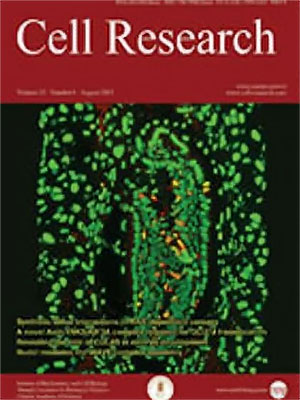
Volume 13, No 6, Dec 2003
ISSN: 1001-0602
EISSN: 1748-7838 2018
impact factor 17.848*
(Clarivate Analytics, 2019)
Volume 13 Issue 6, December 2003: 499-502
COMMENTARY
Identification of two distinct transactivation domains in the pluripotency sustaining factor nanog
Guang Jin PAN1, Duan Qing PEI1,2,*
1Institute of Pharmacology, Department of Biological Sciences and Biotechnology and State Key Laboratory of Biomembrane and Membrane Biotechnology, Tsinghua Institutes of Biomedicine, Tsinghua University, 100084 Beijing, China. E-mail: duanqing@aol.com
2Department of Pharmacology, University of Minnesota, Minneapolis, MN55455, USA.
Correspondence: Duan Qing PEI(duanqing@aol.com )
Nanog is a newly identified homeodomain gene that functions to sustain the pluripotency of embryonic stem cells. However, the molecular mechanism through which nanog regulates stem cell pluripotency remains unknown. Mouse nanog encodes a polypeptide of 305 residues with a divergent homeodomain similar to those in the NK-2 family. The rest of nanog contains no apparent homology to any known proteins characterized so far. It is hypothesized that nanog encodes a transcription factor that regulates stem cell pluripotency by switching on or off target genes. To test this hypothesis, we constructed fusion proteins between nanog and DNA binding domains of the yeast transcription factor Gal4 and tested the transactivation potentials of these constructs. Our data demonstrate that both regions N- and C- terminal to the homeodomain have transcription activities. Despite the fact that it contains no apparent transactivation motifs, the C-terminal domain is about 7 times as active as the N-terminal one. This unique arrangement of dual transactivators may confer nanog the flexibility and specificity to regulate downstream genes critical for both pluripotency and differentiation of stem cells.
FULL TEXT | PDF
Browse 1938


